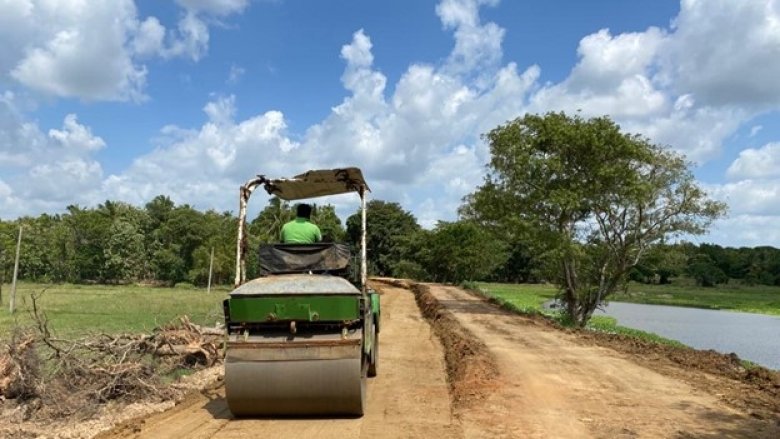Sri Lanka boasts of over 1,000 of village cascades and over 15,000 small tanks in the semi-arid north-central region of the island. Unlike large- and medium-sized reservoirs in the island which often receive water diverted from surplus sources, village tank cascades depend solely on local rainfall. Each cascade connects a series of reservoirs that increase in size as one moves down the cascade. These tanks provide vital support for optimizing farming activities with a reliable source of water, thereby improving rural livelihoods and incomes, while advancing the country’s food security.
The changing patterns of the climate change in Sri Lanka indicate that ‘dryer regions are becoming even dryer’, placing the services the tank cascades have been providing for centuries under pressure. In addition to floods and droughts, which are intensified by climate change, growing socio-economic demands and lack of watershed management strain these systems. Siltation of tanks because of deforestation and heavy rainfall has decreased water available for small-scale farmers. Heavy rains and flash floods are damaging community infrastructure, including irrigation canals and the tanks themselves.
Farming communities and local water users often respond to these impacts by increasing water storage in a tank by raising or extending its wall and by increasing withdrawals from streams or other tanks. While these measures can improve water availability in the short-term, they can alter how the cascade system functions, causing impacts upstream and downstream, decreasing water available for downstream users, inundating lands upstream and affecting the availability of groundwater elsewhere. For these reasons, rehabilitation of tank cascades requires assessing and understanding the entire hydrology of the cascade before intervention.
A new World Bank report, What the Future has in Store: A New Paradigm for Water Storage offers four key lessons on tank rehabilitation for sustainable gains:
- Rehabilitation of tanks using a cascade planning approach improves sustainability. Compared to the ad hoc rehabilitation of individual tanks, a cascade approach helps planners capture any benefits arising from the joint rehabilitation of tanks, for example groundwater recharge, and avoids conflicts between water users.
- Participatory planning produces key information, leads to better decisions, and creates ownership. Even though participatory management of individual tanks by farmer organizations is a well-established practice, cascade level participatory planning is challenging. Coordination among the different stakeholders is poor and support to farmer organizations is lacking. The CSIAP is establishing a system of Cascade Management Committees (CMCs) and the use of cascade management plans that are endorsed in the field via walk-through surveys by CMCs.
- Tank cascade rehabilitation programs can be linked to broader rural revitalization to maximize impact. Rural development programs can help communities in cascades generate income. The Integrated Watershed and Water Resources Management Project aims to enhance livelihood security in rural areas by providing work to communities to restore and protect critical water source areas above the tanks. This is based on an integrated watershed management plan and aims to empower local stakeholders, such as Farmer Organizations and Community Based Organizations, while ensuring the productivity of tanks by reducing sedimentation or water quality issues, for example.
- Ecosystem services at the cascade level should be an important component of assessing rehabilitation projects. The bulk of the multiple benefits generated by tank cascades belong to ecosystem goods and services, flow to the system as a whole and should be included in the assessment of rehabilitation projects.
The experience of farmers like Jayasena speaks to the importance of small-scale water storage in building climate resilience of farming communities. Freshwater storage is at the heart of adapting to climate change; saving farmers water for dry seasons, reducing the impacts of floods and regulating water flows. Sri Lanka’s ancient water systems form a unique basis to build on and adequately plan for water storage. However, any future approaches to developing, rehabilitating, and managing storage must be done in an integrated way, taking stock of these four key lessons, to ensure sustainability of the system as a whole and to champion climate resilience.


